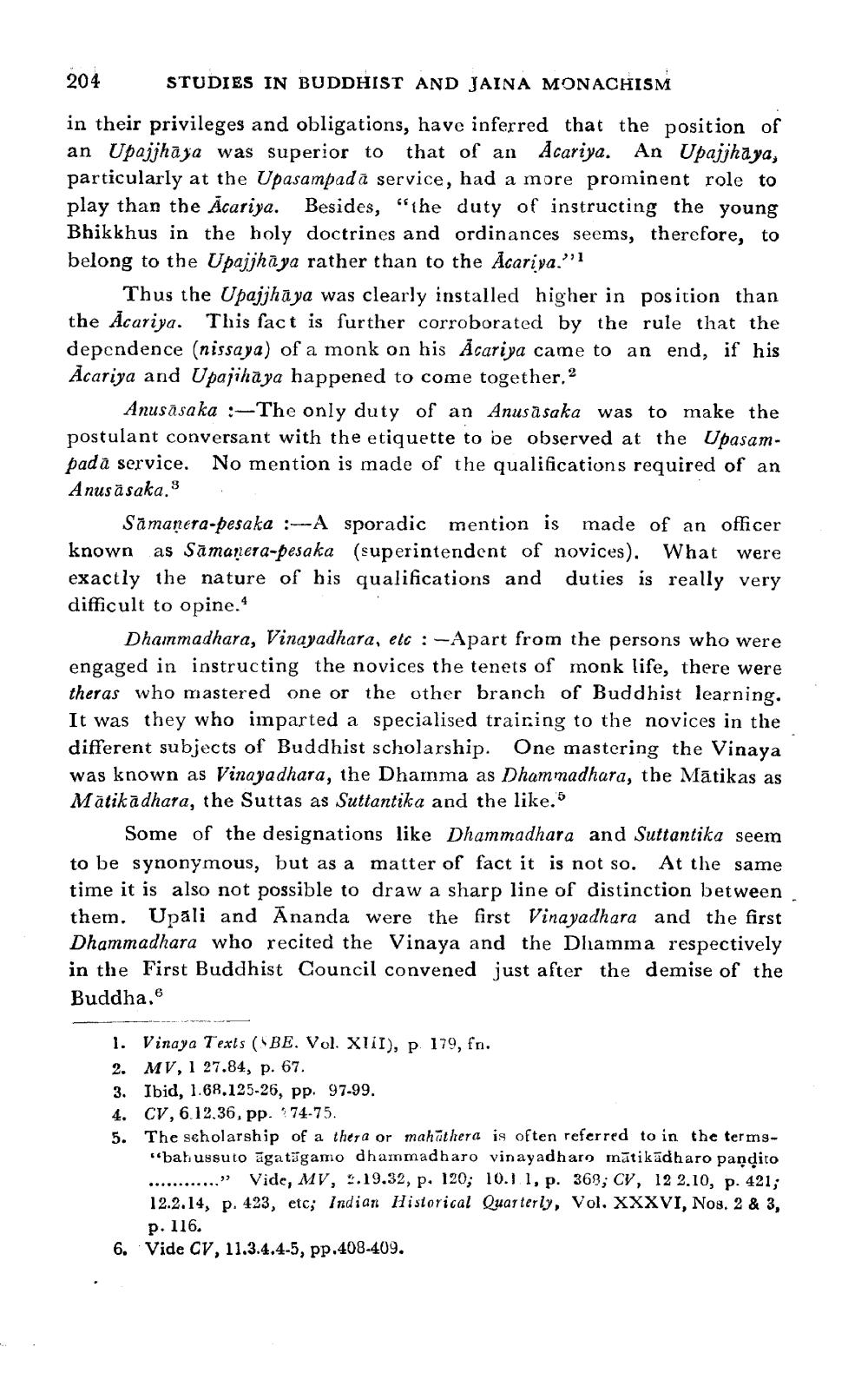________________
204
STUDIES IN BUDDHIST AND JAINA MONACHISM
in their privileges and obligations, have inferred that the position of an Upajjhaya was superior to that of an Acariya. An Upajjhaya, particularly at the Upasampada service, had a more prominent role to play than the Acariya. Besides, "the duty of instructing the young Bhikkhus in the holy doctrines and ordinances seems, therefore, to belong to the Upajjhaya rather than to the Acariya."
Thus the Upajjhaya was clearly installed higher in position than the Acariya. This fact is further corroborated by the rule that the dependence (nissaya) of a monk on his Acariya came to an end, if his Acariya and Upajihaya happened to come together.2
Anusasaka -The only duty of an Anusasaka was to make the postulant conversant with the etiquette to be observed at the Upasampada service. No mention is made of the qualifications required of an Anusasaka.3
Samanera-pesaka :-A sporadic mention is made of an officer known as Samanera-pesaka (superintendent of novices). What were exactly the nature of his qualifications and duties is really very difficult to opine.
Dhammadhara, Vinayadhara, etc: -Apart from the persons who were engaged in instructing the novices the tenets of monk life, there were theras who mastered one or the other branch of Buddhist learning. It was they who imparted a specialised training to the novices in the different subjects of Buddhist scholarship. One mastering the Vinaya was known as Vinayadhara, the Dhamma as Dhammadhara, the Mātikas as Matika dhara, the Suttas as Suttantika and the like."
Some of the designations like Dhammadhara and Suttantika seem to be synonymous, but as a matter of fact it is not so. At the same time it is also not possible to draw a sharp line of distinction between them. Upali and Ananda were the first Vinayadhara and the first Dhammadhara who recited the Vinaya and the Dhamma respectively in the First Buddhist Council convened just after the demise of the Buddha,6
1. Vinaya Texts (BE. Vol. XIII), p. 179, fn.
2. MV, 1 27.84, p. 67.
3. Ibid, 1.68.125-26, pp. 97-99.
4. CV, 6.12.36, pp. 174-75.
5. The scholarship of a thera or mahathera is often referred to in the terms"bahussuto aga tagamo dhammadharo vinayadharo matikadharo pandito Vide, MV, 2.19.32, p. 120; 10.1 1, p. 368; CV, 12 2.10, p. 421; 12.2.14, p. 423, etc; Indian Historical Quarterly, Vol. XXXVI, Nos. 2 & 3, p. 116.
6. Vide CV, 11.3.4.4-5, pp.408-409.




